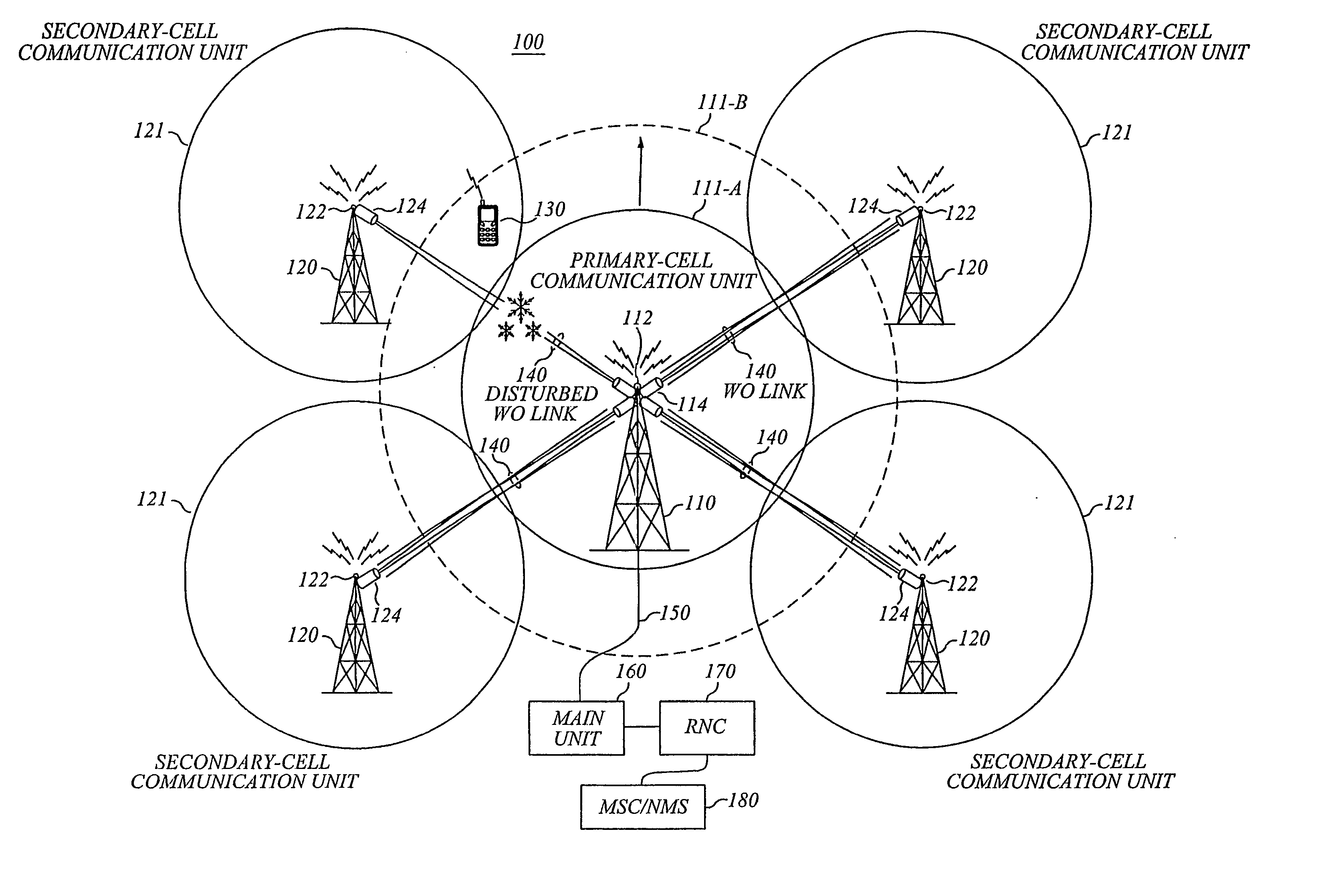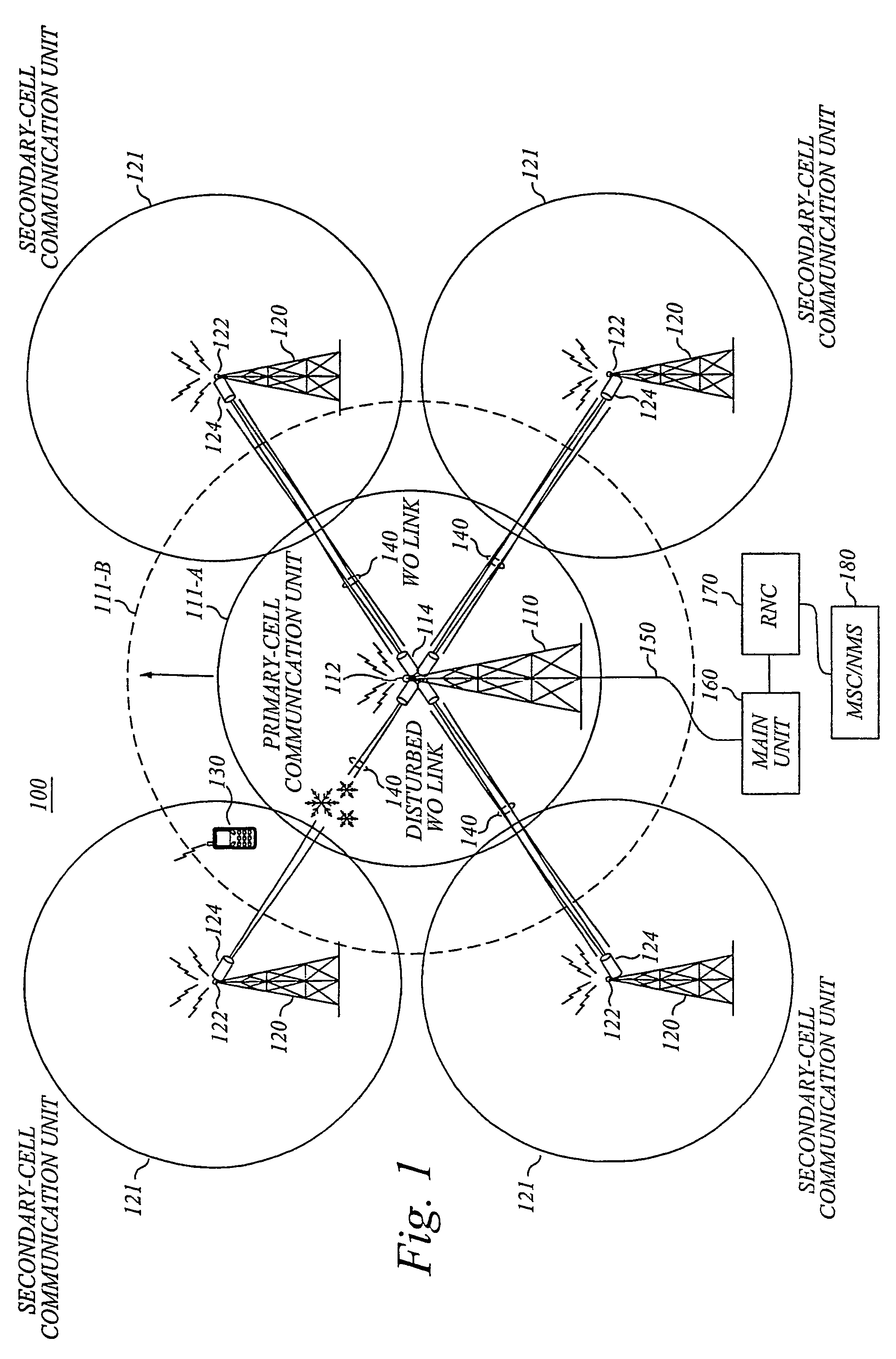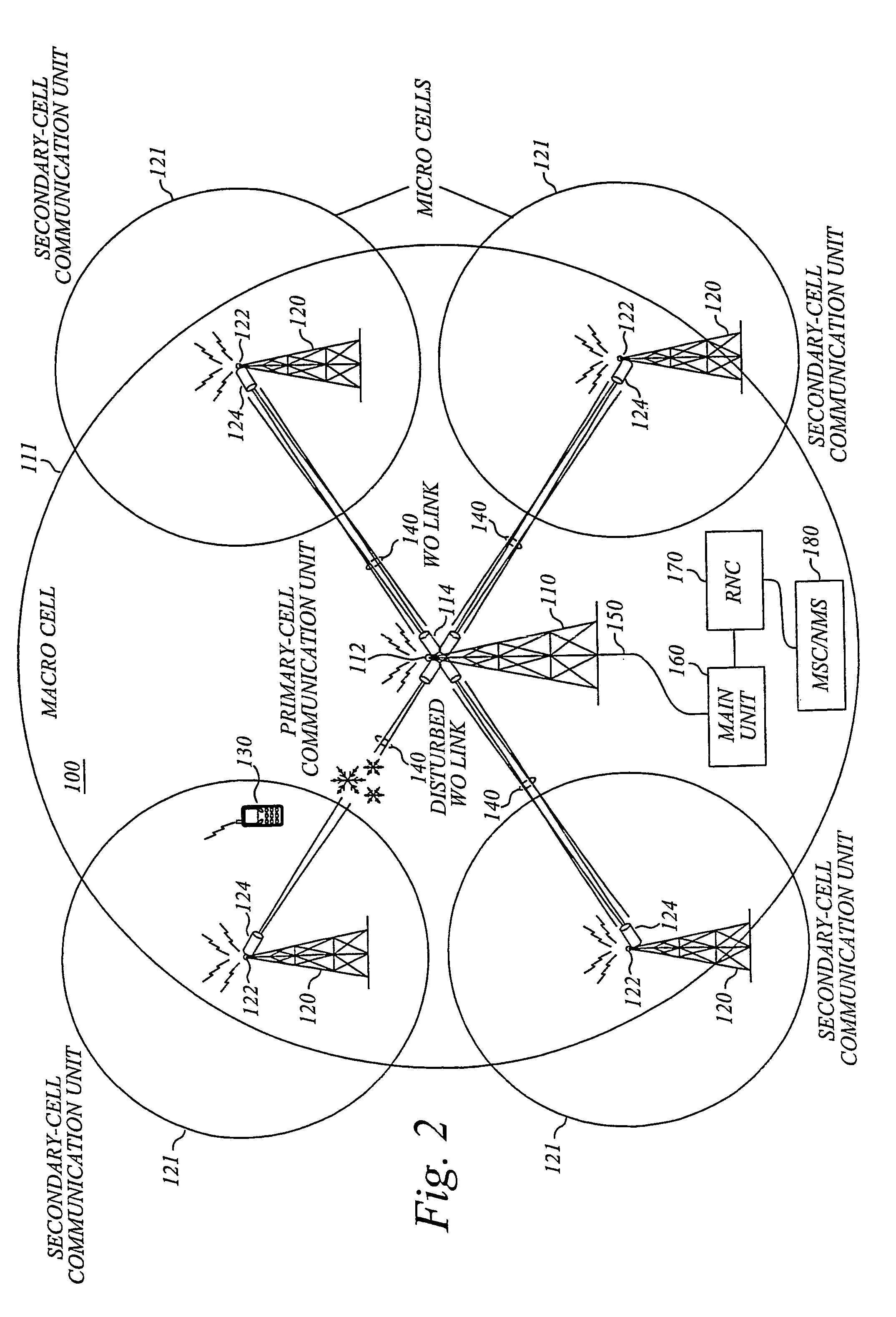Cellular communications system employing wireless optical links
a wireless optical link and communication system technology, applied in wireless communication, line-of-sight transmission, wireless communication, etc., can solve the problems of reducing affecting the service life of the network, so as to reduce the capacity and increase the radio coverage. , the effect of reducing the capacity and reducing the cos
- Summary
- Abstract
- Description
- Claims
- Application Information
AI Technical Summary
Benefits of technology
Problems solved by technology
Method used
Image
Examples
Embodiment Construction
[0045]Throughout the drawings, the same reference characters will be used for corresponding or similar elements.
System Overview
[0046]FIG. 1 is a schematic diagram illustrating relevant parts of a cellular communication system according to a preferred embodiment of the invention. The cellular communication system 100 may be a mobile network or similar communication network. The cellular communication system 100 includes radio-based communication units, such as the primary-cell communication unit 110 and the secondary-cell communication units 120, for allowing radio communication with mobile radio terminals 130. Each radio-based communication unit generally serves a particular cell in the cellular system. The secondary-cell communication units 120 are interconnected to the primary-cell communication unit 110 via respective wireless optical (WO) links 140, and the primary-cell communication unit 110 in turn is interconnected by a link interface 150 to a central main unit 160. The main ...
PUM
 Login to View More
Login to View More Abstract
Description
Claims
Application Information
 Login to View More
Login to View More - R&D
- Intellectual Property
- Life Sciences
- Materials
- Tech Scout
- Unparalleled Data Quality
- Higher Quality Content
- 60% Fewer Hallucinations
Browse by: Latest US Patents, China's latest patents, Technical Efficacy Thesaurus, Application Domain, Technology Topic, Popular Technical Reports.
© 2025 PatSnap. All rights reserved.Legal|Privacy policy|Modern Slavery Act Transparency Statement|Sitemap|About US| Contact US: help@patsnap.com



